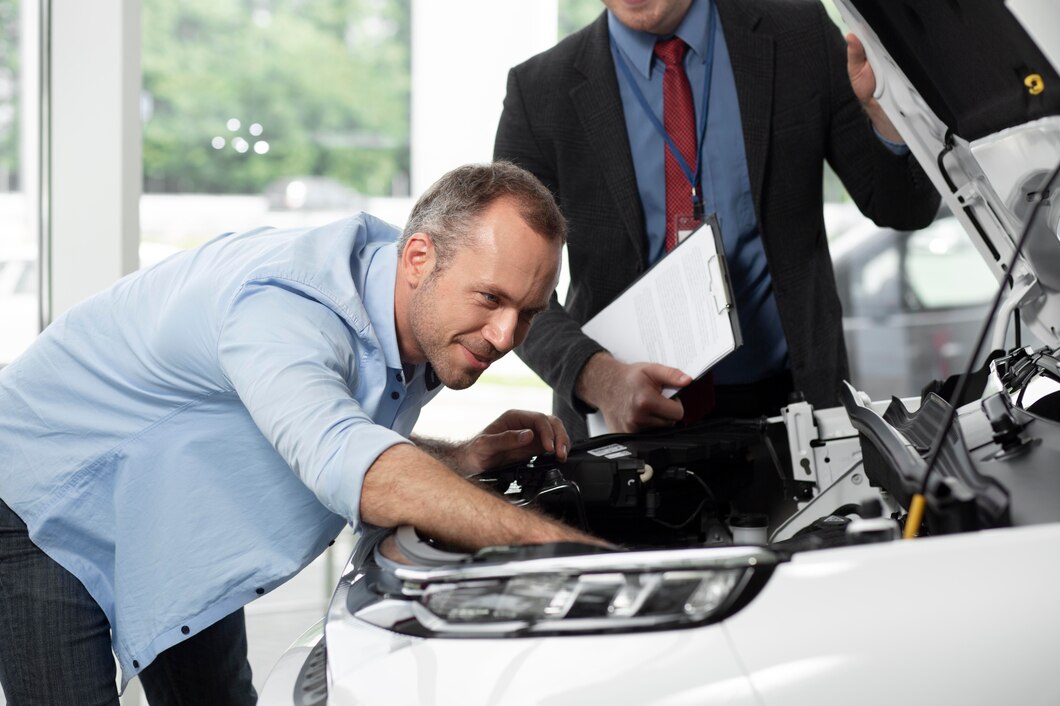Buying a second-hand car can be a rewarding experience if you know what to look for during the inspection process. Whether you’re purchasing from a dealership or a private seller, conducting a thorough inspection is essential to ensure you’re getting a reliable vehicle that meets your needs. Here’s a step-by-step guide on how to inspect a second-hand car before making a purchase:
1. Exterior Inspection
- Body Condition: Inspect the car’s exterior for any signs of rust, dents, or scratches. Check for paint inconsistencies, which may indicate previous repairs.
- Tires: Check the tire tread depth and condition. Uneven wear patterns could suggest alignment issues or suspension problems.
- Lights and Lenses: Ensure all lights, including headlights, brake lights, and indicators, are functional. Check for cracks or moisture inside the lenses.
- Windows and Mirrors: Test all windows and mirrors for smooth operation and check for cracks or chips in the glass.
2. Interior Inspection
- Seats and Upholstery: Inspect the seats and upholstery for wear, tears, or stains. Check that seat adjustments work properly.
- Dashboard and Controls: Test all dashboard controls, including air conditioning, radio, and navigation systems. Check for warning lights on the dashboard when starting the car.
- Odors: Smell the interior for any unusual odors, which could indicate mold, mildew, or other issues.
3. Under the Hood
- Engine Bay: Inspect the engine bay for signs of leaks, corrosion, or worn belts and hoses. Look for any disconnected or loose wires.
- Fluid Levels: Check engine oil, transmission fluid, brake fluid, and coolant levels. Low fluid levels or dirty fluids may indicate poor maintenance.
- Battery: Inspect the battery for corrosion and check the terminals for tight connections.
4. Underneath the Car
- Suspension: Check the suspension by pushing down firmly on each corner of the car. The car should bounce back and settle quickly.
- Exhaust System: Inspect the exhaust system for rust, holes, or leaks. Start the engine and listen for unusual noises or excessive smoke from the exhaust.
- Frame and Chassis: Look for signs of damage or repairs to the frame and chassis. Rust or welding marks may indicate previous accidents.
5. Test Drive
- Starting the Car: Start the engine and listen for any unusual noises, such as knocking or ticking.
- Driving Dynamics: Take the car on a test drive to assess its handling, braking, and acceleration. Listen for vibrations or pulling to one side, which could indicate alignment issues.
- Brakes: Test the brakes by applying firm pressure. They should respond smoothly without grinding noises or excessive pedal travel.
6. Documentation and History
- Service Records: Request maintenance records to verify that the car has been serviced regularly. Look for evidence of major repairs or recurring issues.
- Vehicle History Report: Obtain a vehicle history report to check for past accidents, ownership history, and any outstanding finance or legal issues.
7. Professional Inspection
- Mechanical Inspection: Consider hiring a qualified mechanic to conduct a pre-purchase inspection. They can provide an unbiased assessment of the car’s condition and identify potential problems that may not be apparent during your inspection.
Inspecting a second-hand car thoroughly before buying is crucial to avoid unexpected repairs and ensure you’re making a sound investment. By following these steps and taking your time during the inspection process, you can confidently assess the car’s condition and negotiate a fair price based on its true value. Remember, a well-maintained and properly inspected car will not only provide reliable transportation but also peace of mind knowing that you’ve made an informed decision.











